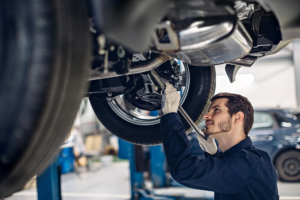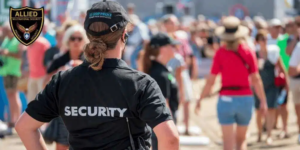Whether you’re a wedding photographer, plumber, or local business, local SEO can help you reach more customers and grow your business. Here are some of the top benefits of investing in local SEO:
Optimizing your Google Business profile and online reviews is crucial to local search optimization. This will demonstrate your credibility and relevance to search engines and attract customers to your business. Contact Houston Local SEO now!

Suppose your business has a physical location or serves a specific geographic area. In that case, local SEO can help you be seen in search engine results when people look for products or services that you offer. Local SEO is distinct from traditional SEO in that it focuses on optimizing your website and Google Business Profile to rank for keywords that are relevant to a certain locale. While there are some differences between local and traditional SEO, there is also a great deal of overlap. For example, optimizing your website for local searches may involve adding your NAP to every page of your site (name, address, phone number) and making sure those details are correct and consistent across the web.
Other elements of local SEO include collecting online reviews, focusing on mobile optimization, and building a robust backlink profile. These are all important aspects of any digital marketing strategy, and they’re especially critical for local SEO.
When it comes to online reviews, your local SEO strategy should focus on promoting and managing reviews for your business on consumer directories and social media platforms. This includes sites like Facebook, Yelp, Angie’s List, Thumbtack, and Foursquare. It’s also important to make sure that you’re collecting reviews from your real-world customers and not just fake ones.
Another way to boost your local SEO is to perform a competitor analysis to find out which keywords they’re ranking for and which ones you’re missing out on. A tool like Semrush can be helpful for this, as it lets you see the keywords that your competitors are ranking for, as well as the top organic results for those keywords.
A robust backlink profile is also important for local SEO, as it demonstrates to search engines that your site is popular and authoritative. Some local SEO tactics that you can use to build up your backlinks include performing a backlink audit on your competition (using tools like Ubersuggest) and reaching out to relevant sites to request a link.
A comprehensive local SEO strategy can be an effective way to drive more traffic to your website and grow your business. To get started, be sure to set up and optimize your Google Business Profile. Then, start monitoring your search engine rankings to identify any volatility. This could be a sign that Google has made a change to their algorithm, and you’ll need to adjust your strategies accordingly.
Higher Conversion Rates
Local SEO is a great way to generate qualified leads in your service area. It allows you to target the most relevant keywords and focus on addressing the specific needs of potential customers. As a result, your business can stand out from competitors that have not yet embraced local search optimization.
As the Internet becomes more and more reliant on location information, it is becoming even more important to take advantage of local search optimization. It can provide your business with a significant competitive edge and attract more clients to your store or website. In addition, your local SEO strategy can help you improve the conversion rate of your site by boosting traffic and converting visitors into paying customers.
Google’s local search algorithm includes a variety of factors that are unique from traditional SEO signals. These include relevancy, prominence and reviews. Reliability focuses on the quality of your products or services, whereas prominence emphasizes your company’s visibility in the community. Finally, reviews and customer feedback are essential for local search engine rankings.
It is also important to keep in mind that the majority of local searches are conducted on mobile devices. This means that you need to make sure your website and Google Business Profile are optimized for mobile. This will ensure that your site is accessible to mobile users and that you can rank higher in the local pack.
It is also important to focus on building links from local authority websites. These could include licensing bureaus, trade associations and chambers of commerce. You may also consider reaching out to local schools to offer scholarships or partnerships. In addition, it is vital to monitor your local SEO rankings on a regular basis. This will allow you to stay ahead of your competition and make changes as needed. For example, you might need to update your NAP information on a listing directory if it is inconsistent with the information that appears on your website or Google Business Profile. A tool like Rank Tracker will allow you to monitor your local search rankings and identify any fluctuations in your position.
Increased Reputation
Unlike traditional search engine optimization that focuses on keywords and website structure, local SEO takes into account the relevance and credibility of the business. This means a company that invests in its local SEO will see increased visibility, leads, and sales. Local SEO is also a great way to connect with customers and establish a strong brand identity.
Research shows that consumers are shifting their purchasing power from big name brands and chains to small, local businesses. This shift in consumer behavior has created a significant opportunity for local business owners to grow their business by increasing sales and customer engagement. With local SEO strategies, you can be sure that your business is visible to potential customers at exactly the time they need the products or services you offer.
When people conduct local searches, they’re looking for specific information such as store hours, product availability, or even reviews. Searchers are much more likely to click on a search result that has a high number of five-star reviews than one with only a few stars.
That’s why it’s important to focus on getting as many positive reviews as possible on your Google Business Profile and other relevant online listings. You can increase your review count by encouraging happy customers to leave reviews and ensuring that all negative feedback is addressed promptly and professionally.
Local SEO involves claiming and optimizing your business listings, creating content that’s locally focused, building backlinks, and gaining citations. This can be a lot of work, but it’s well worth the investment. A well-optimized Google Business Profile listing is the most effective way to get found online by local searchers, and customers are 70% more likely to choose a business with a complete profile.
In addition to optimizing your business listings, you can grow your local search footprint by submitting your site to web directories, industry-specific websites, and national and regional directory websites. You can also gain citations by adding your business to review sites, guest posting on high-authority websites, and other methods. These strategies will help you build trust and credibility with both search engines and users, which will increase your business’s organic search results over time.
Better Return on Investment
Search engine optimization requires time, effort, and expertise to get results. Unlike some other digital marketing channels that generate short bouts of traffic and leads, local SEO is a long-term strategy that drives ongoing growth for businesses. That translates into a better return on investment than other forms of digital marketing.
Investing in local SEO can also help businesses improve their brand awareness and gain more customers. This is because when a business appears in Google’s search results, people are more likely to notice the business name and website and remember it. As a result, more customers will come to the business when they are looking for a specific product or service.
Additionally, local SEO can help businesses increase their conversion rate. This is because when people are searching for a particular product or service, they are usually in the buying stage. That means they’re ready to make a purchase or sign up for an account. Local SEO helps businesses target this audience by optimizing their websites and online listings for relevant keywords. As a result, more qualified visitors visit the site, which leads to more sales and conversions.
Local SEO can help businesses grow their revenue by targeting hyper-relevant traffic and building trust with potential customers. In addition, local SEO can improve the company’s online presence and provide a better user experience. This can increase the brand’s credibility and help it stand out from its competitors.
Despite being more affordable than other digital marketing techniques, local SEO can have a great return on investment. As such, it’s a crucial part of any digital marketing campaign.
To ensure that your local SEO efforts are producing results, it’s important to monitor your progress regularly. Use a tool such as Google Search Console or Local Rank Flux to track your local keyword rankings. This will help you keep track of your progress and identify any problems quickly.
Another important metric to consider is the number of reviews your business has. According to a recent study by Moz, review signals are one of the top factors that influence local search and snack pack ranking. To improve your local SEO, you should focus on collecting more authentic customer reviews. To do so, you should encourage your customers to leave a review on your website and GMB listing, as well as other consumer directories like Yelp and Tripadvisor.








